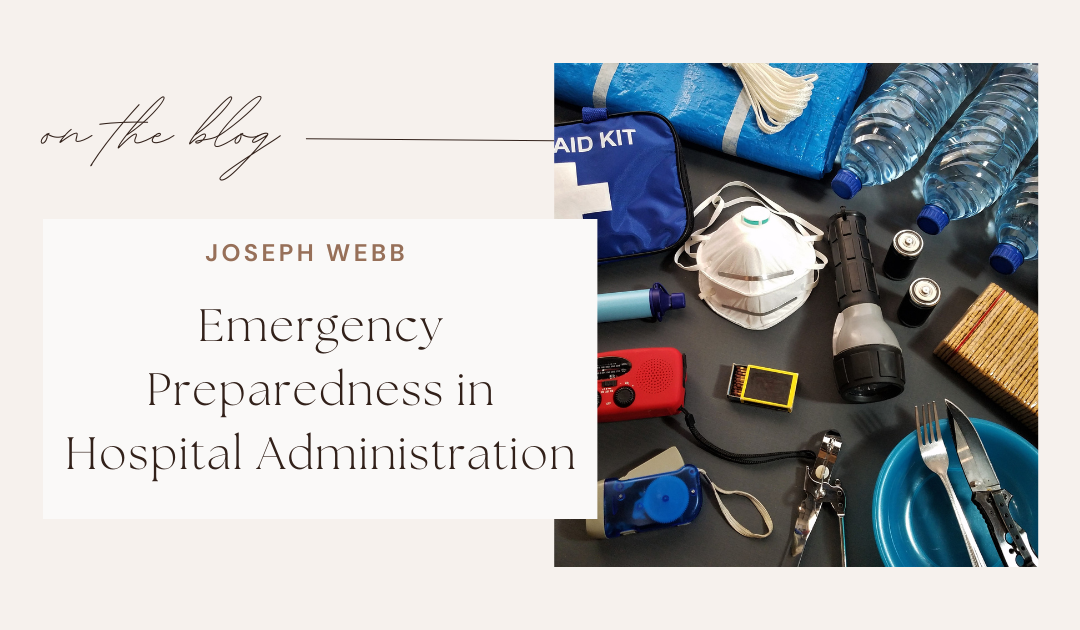Emergency preparedness is a vital aspect of hospital administration that directly influences a healthcare facility’s ability to respond to crises, protect lives, and recover effectively. Whether facing natural disasters, pandemics, cyberattacks, or mass casualty events, hospitals must have robust and flexible preparedness plans. Effective emergency planning requires collaboration across departments, clear communication, resource management, and a commitment to continuous improvement.
The role of hospital administrators in emergency preparedness cannot be overstated. Administrators are responsible for creating, maintaining, and executing emergency operations plans that meet federal, state, and local requirements. These plans must address a wide range of potential scenarios and clearly outline the roles and responsibilities of staff during an emergency. A well-structured plan can mean the difference between chaos and coordinated response when seconds count.
One of the first steps in emergency preparedness is conducting a comprehensive risk assessment. This involves identifying potential hazards specific to the hospital’s location, such as earthquakes, hurricanes, or industrial accidents, and evaluating the facility’s ability to respond. Administrators must work with local emergency services, public health officials, and internal departments to analyze vulnerabilities and prioritize response strategies.
Communication is another cornerstone of emergency readiness. During a crisis, timely and accurate information is essential for coordinating actions, managing patient flow, and maintaining public trust. Hospital administrators must ensure that communication systems are in place and functional, including emergency alerts, internal messaging platforms, and coordination lines with first responders and government agencies. Regular communication drills and tabletop exercises can help staff stay familiar with protocols and reduce confusion in real emergencies.
Resource management is equally important. Hospitals must maintain adequate supplies of personal protective equipment (PPE), medications, food, water, and emergency power. Administrators should also establish agreements with suppliers and neighboring facilities to share resources when shortages occur. Stockpiles need to be regularly checked, rotated, and updated based on evolving risks and usage trends.
Training and education are key components of a hospital’s preparedness strategy. Administrators must ensure that all staff members, from medical professionals to support staff, receive regular training on emergency procedures. This includes evacuation protocols, incident command structures, infection control measures, and first aid basics. The goal is to ensure that everyone knows what to do, where to go, and how to contribute effectively when a crisis hits.
Emergency preparedness also involves planning for surge capacity. Hospitals must be prepared to accommodate a sudden influx of patients, as seen during public health emergencies like the COVID-19 pandemic. This may involve converting non-clinical areas into patient care zones, expanding staffing through temporary workers or volunteers, and implementing telemedicine solutions to reduce the strain on physical facilities. Surge planning must be flexible and regularly updated based on lessons learned from past incidents.
Cybersecurity is another emerging focus in hospital emergency planning. As healthcare organizations become more reliant on digital systems, they become more vulnerable to cyberattacks. Ransomware attacks can cripple hospital operations and compromise patient data. Administrators must include cybersecurity in their emergency preparedness plans, conduct regular risk assessments, and implement disaster recovery protocols for digital systems.
Mental health support is often overlooked but critical in times of crisis. Emergency situations can cause significant stress and trauma for both patients and healthcare workers. Hospital administrators must ensure access to mental health resources, peer support programs, and counseling services. A resilient workforce is better equipped to function effectively under pressure and recover after the emergency has passed.
Evaluation and improvement complete the cycle of emergency preparedness. After-action reviews and debriefings following drills or real incidents provide valuable insights into what worked and what didn’t. Administrators must use these evaluations to update emergency plans, refine training programs, and address any gaps in response capabilities.
In summary, emergency preparedness is an essential function of hospital administration that requires foresight, coordination, and commitment. By anticipating risks, maintaining strong communication, managing resources efficiently, and fostering a culture of readiness, healthcare administrators can lead their institutions through crises with confidence and care. Investing in preparedness not only safeguards patients and staff but also strengthens the hospital’s ability to serve its community when it is needed the most.

